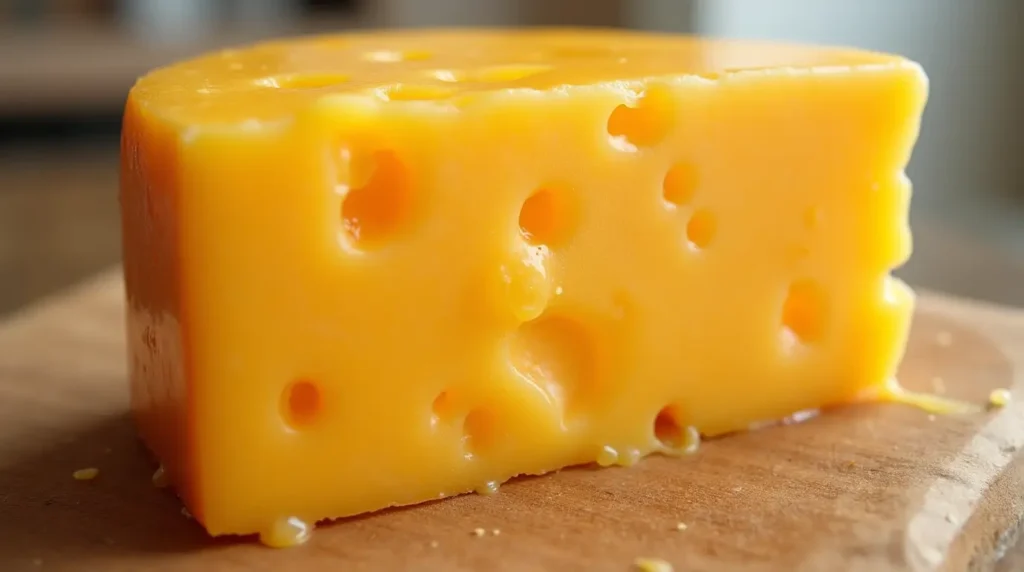




Provolone cheese is a semi-hard Italian cheese that is beloved worldwide for its versatile flavor and creamy texture. Originating in Southern Italy, provolone is part of the pasta filata, or "stretched curd," family of cheeses, similar to mozzarella. The cheese is made primarily from cow’s milk and is aged to develop its signature taste. Traditionally, provolone is shaped into large cylinders or oval blocks and hung to age, allowing it to develop its characteristic texture and mild-to-sharp flavor profile.
Depending on the aging process, provolone can range from sweet and creamy (provolone dolce) to sharp and tangy (provolone piccante). This diversity makes it a favorite choice in cooking and snacking. Whether melted into a sandwich or served on a charcuterie board, provolone cheese always adds a rich, distinctive touch.
The flavor of provolone cheese depends largely on its aging process. Younger provolone, known as provolone dolce, has a mild, creamy, and slightly buttery taste. It’s a crowd-pleaser for those who prefer subtle flavors. On the other hand, provolone piccante, which is aged longer, develops a more robust, tangy, and sharp flavor. This variety often appeals to those who love bold, savory cheeses.
When melted, provolone releases a slightly nutty aroma and becomes wonderfully gooey, making it ideal for dishes like cheesesteaks, pasta, and pizza. Its versatility in taste ensures it can complement a variety of recipes, from mild to intensely flavorful dishes.
No, provolone and mozzarella are not the same, although they share similarities. Both are part of the pasta filata family, meaning their curds are stretched and kneaded during production. However, the two cheeses differ significantly in texture, flavor, and usage.
So, while they are related, provolone and mozzarella are distinct cheeses with unique roles in the culinary world.
Provolone cheese shares similarities with several other cheeses, making it easier to find substitutes if needed. Some cheeses that are comparable to provolone include:
These cheeses can be used depending on the flavor intensity or texture desired for your recipe.
In the United Kingdom, provolone cheese is generally referred to by its original Italian name, "provolone." It is widely recognized and available in supermarkets and specialty stores. British consumers often appreciate provolone for its versatility in sandwiches, cheese boards, and cooking.
When imported directly from Italy, provolone is labeled as "Provolone DOP" (Denominazione di Origine Protetta), ensuring its authenticity. UK supermarkets and delis may also sell locally-produced variations that replicate the traditional Italian methods, though they might not carry the official DOP label.
Provolone cheese enjoys widespread popularity for several reasons:
The cheese’s adaptability and unique taste profile explain why it remains a favorite in kitchens around the world.
The halal status of provolone cheese depends on the type of rennet used during production. Rennet is an enzyme used to curdle milk, and it can come from animal, microbial, or plant-based sources:
To ensure provolone cheese is halal, check the label for certifications or inquire about the production process from the manufacturer. Many brands today produce halal-certified cheeses to cater to diverse dietary needs.Source
Provolone cheese’s versatility makes it a star ingredient in numerous recipes. Here are some popular dishes that showcase its flavor:
Provolone cheese is a versatile, flavorful addition to any kitchen. With its wide range of flavors, from mild to sharp, and its melting qualities, it’s no wonder provolone is loved by people worldwide. Whether you’re crafting a classic Philly cheesesteak or adding flair to your cheese platter, provolone brings a rich, creamy, and unforgettable flavor.
Please don’t forget to leave a review.
